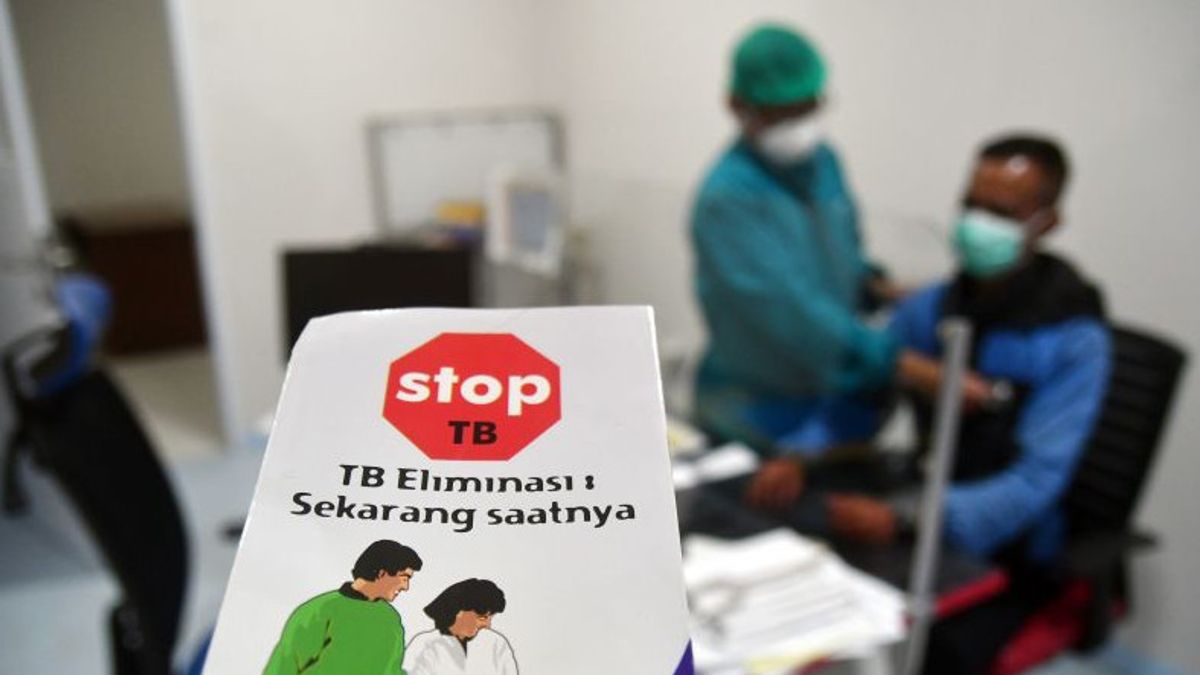JAKARTA Tuberculosis cases (TBC) in children in Indonesia have increased significantly, from 42,187 cases in 2021 to 100,726 cases in 2022. Even until March 2023, the Ministry of Health's Director of Prevention and Control of Infectious Diseases (P2PM) Imran Pambudi said there had been 18,144 cases of children infected with this infectious disease.
The causes are very diverse. The result is because of the public's lack of understanding about the symptoms of tuberculosis. It could also be because of feeling ashamed due to the stigma from the community.
"Of course, these factors must be a common concern," he said at the online event of the 2023 World Tuberculosis Day Commemoration on March 17, 2023.
First regarding symptoms. Children, said the Head of the Respiratory Coordination Work Unit of the Indonesian Pediatrician Association (IDAI) Rina Triasih, are the group most vulnerable to contracting TB and have a high risk of contracting severe tuberculosis.
Common symptoms can be seen from physical. For example, children's weight has not increased in the last 2 months, and even tends to decrease even though they have received good nutritional intake.
Then, have a fever for more than 2 weeks and repeat it over and over again for no reason. What is more clear, said Rina, is that the child has been coughing for two weeks. Instead of getting better, coughing is even worse.
For more than 2 weeks there are several reasons, it could be because of asthma, bronchitis, or TB. If the TBC, the symptoms will settle even though treatment has been given," Rina said in a virtual briefing media on Monday, March 20, 2023.
There are also times, the child's body looks lethargic, not actively playing and the appearance of lumps in the glands of the lower jaw neck, armpit, and groin.
"For more details, you have to go to the doctor so that the TB case can continue to be suppressed and more people can be cured. Parents don't need to worry, this is a disease that can recover from the right treatment mechanism," said Rina.
Another trigger factor that causes the number of TB cases to continue to increase is the stigma of the community. As a result, patients or TB survivors are diagnosed late, do not comply with treatment, or break up treatment.
That, said Rina, a serious problem, 'If a TB patient does not receive treatment, the risk of transmission is even greater. Handling for the patient himself is also more complex.'
Especially children. Stigma also causes them to withdraw from the environment, be rejected from association, and find it difficult to go to school. This condition ultimately contradicts the emergence of economic and mental health problems, such as depression and anxiety.
'Children who have TB or have family members who suffer from tuberculosis are often subjected to discrimination.' In a rather tricky school, for example there are parents of school students in an area who want to move their children just because there are school residents who are known to be affected by tuberculosis,' said Rina.
All both psychological, economic, and health are interrelated and have a bad impact if not handled properly.
"For that, we need to strengthen our commitment in tackling TB. We must achieve the target of being able to eliminate TB by 2030," added Imran.
TB is a disease caused by bacterial cobacterium tuberculosis, especially attacks the lungs but does not rule out other organs such as brain membranes, intestines, lymph nodes, kidneys, bones, and skin.
Infectious by air through patient saliva when coughing, talking, or sneezing without covering the mouth and nose or without wearing a mask. Not only children, TB also attacks adults and parents.
Treatment of tuberculosis usually takes months with strict rules for taking medication, to prevent the risk of antibiotic resistance. If not treated quickly, tuberculosis can be fatal. Even so, tuberculosis is a disease that can be cured and can be prevented.
The total number of TB cases in Indonesia in 2021 and 2022, based on data from the Ministry of Health, reached 969,000 people. In 2021, 443,235 of them were detected and 91 percent had received treatment.
By 2022, the number of detected cases will increase, reaching 717,941 and 85 percent of them have received treatment.
So far, the Ministry of Health continues to strive to educate the public, including in terms of prevention. There are a number of steps that can be taken to prevent transmission of tuberculosis:
"In achieving elimination in 2023, we have indeed developed a strategy for eliminating TB starting from prevention by providing immunization and counseling on TB prevention, providing TB diagnostic facilities, and health promotions. Successing it certainly requires collaboration between stakeholders and a number of people, including among researchers," said Health Minister Budi Gunadi Sadikin.
The English, Chinese, Japanese, Arabic, and French versions are automatically generated by the AI. So there may still be inaccuracies in translating, please always see Indonesian as our main language. (system supported by DigitalSiber.id)









